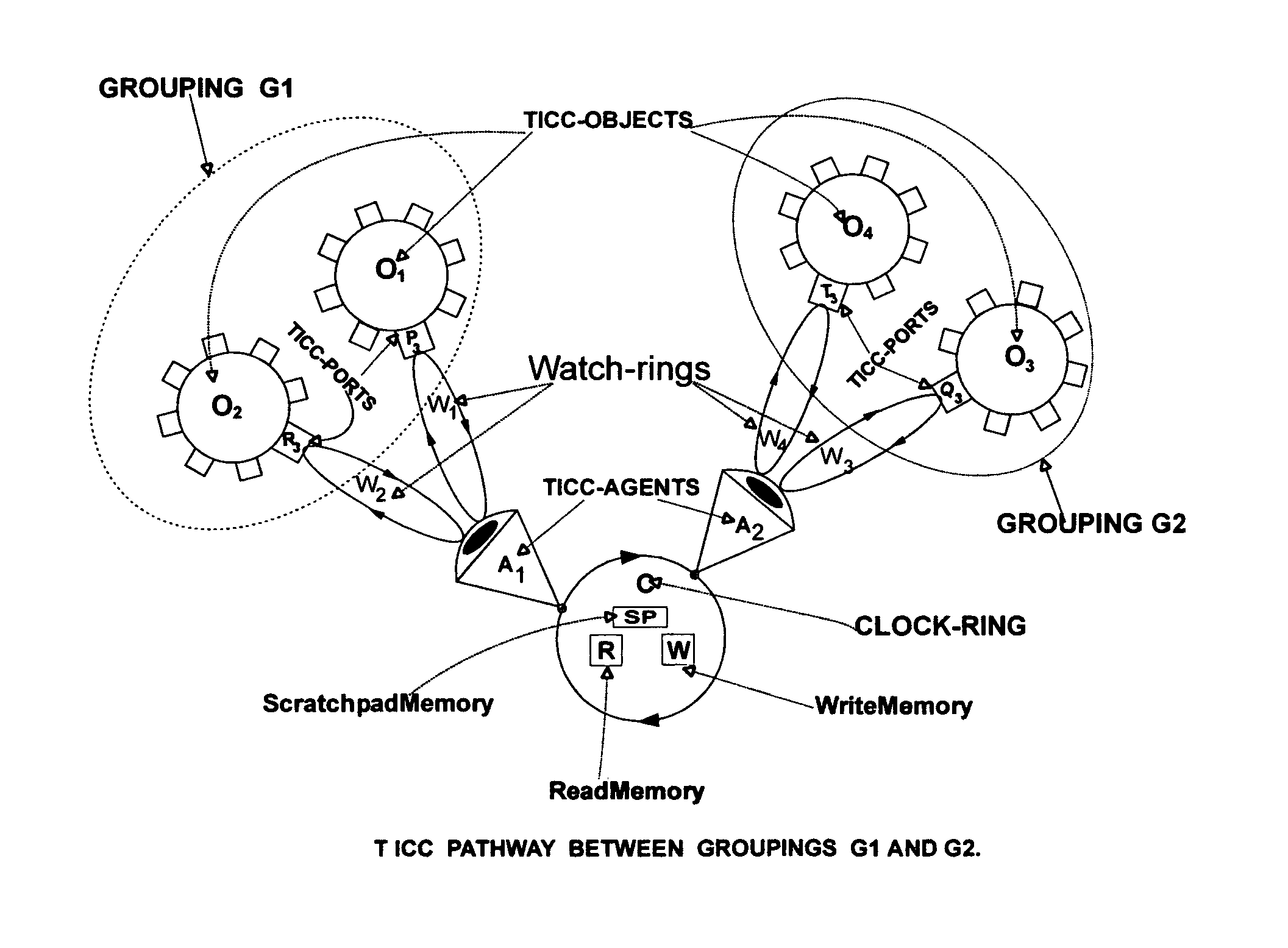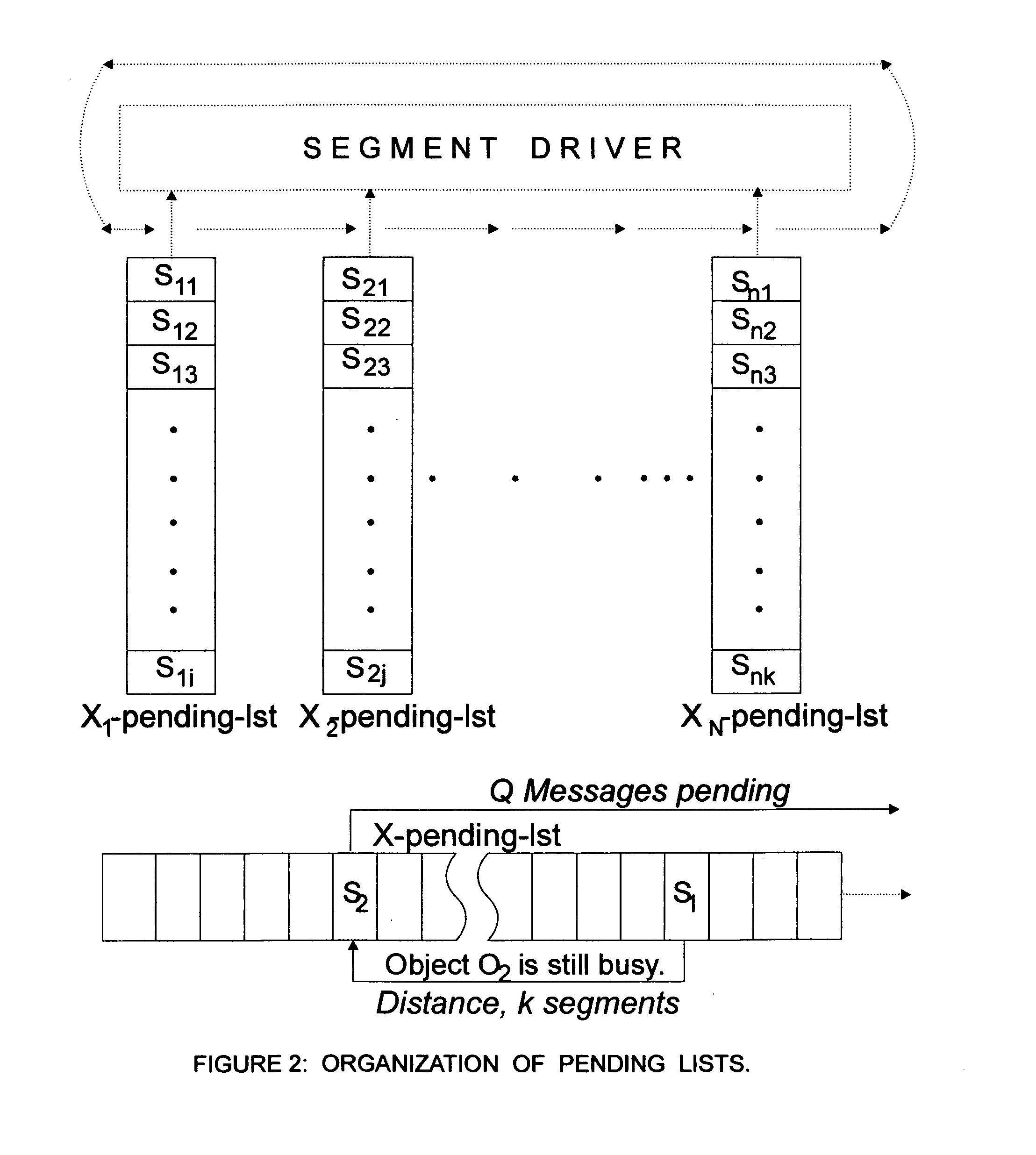Technology for integrated computation and communication; TICC
- Summary
- Abstract
- Description
- Claims
- Application Information
AI Technical Summary
Benefits of technology
Problems solved by technology
Method used
Image
Examples
Embodiment Construction
[0062]We begin the detailed description with a conceptual overview of TICC. Implementation details that produce a practical and efficient implementation of TICC, fully realizing all its potential benefits are introduced next in Chapter 2 through a design for implementation, stated in the LISP programming language.
Chapter 1: Conceptual Overview of TICC
[0063]1.1.Overview of TICC Organization
[0064]TICC assumes an object centered software environment. It assumes active objects, i.e., each object would contain its own threads. Groups of objects in an application system may communicate with each other in parallel. Communication in TICC is connection oriented: One group of objects may communicate with another group if and only if there are TICC-pathways connecting them. TICC specifies a causal communication language, CCL. It has two parts: Its first part contains command statements, which are part of an API (Application Programmer Interface) for TICC. These are used by application objects ...
PUM
 Login to View More
Login to View More Abstract
Description
Claims
Application Information
 Login to View More
Login to View More - R&D
- Intellectual Property
- Life Sciences
- Materials
- Tech Scout
- Unparalleled Data Quality
- Higher Quality Content
- 60% Fewer Hallucinations
Browse by: Latest US Patents, China's latest patents, Technical Efficacy Thesaurus, Application Domain, Technology Topic, Popular Technical Reports.
© 2025 PatSnap. All rights reserved.Legal|Privacy policy|Modern Slavery Act Transparency Statement|Sitemap|About US| Contact US: help@patsnap.com



